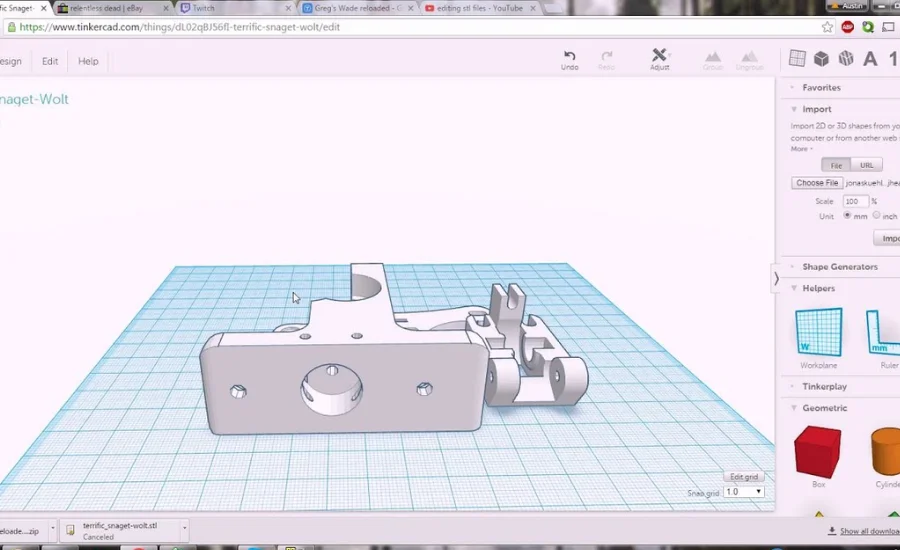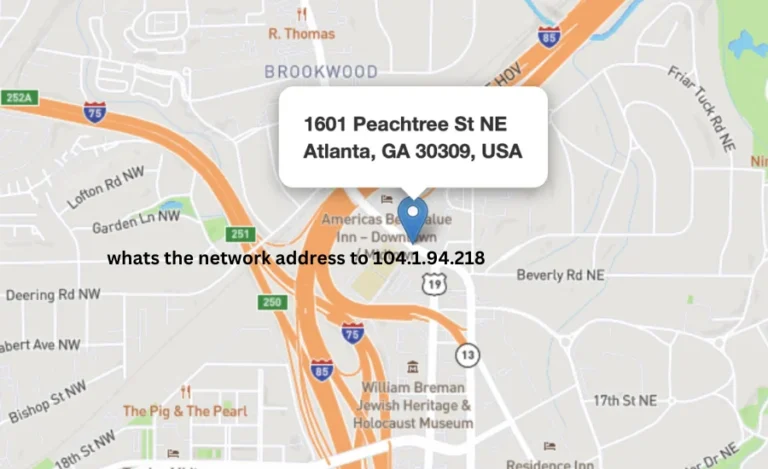Edit stl via gremap: Powerful Techniques to Transform Your 3D Models!
Edit stl via gremap: The foundation of 3D printing is stereolithography (STL) files, which capture the complex surface geometry of things. They are essential to producing accurate and intricate prints. But for those who are unfamiliar with 3D printing, modifying these files might be intimidating. This is where Gremap steps in, offering robust features designed to simplify the editing process.
Gremap is recognized for its accuracy and intuitive interface, making it an excellent choice for both novices and seasoned users looking to modify their STL files effectively. With Gremap, you can manipulate your 3D designs with ease, ensuring that they meet your specific requirements. This guide will walk you through the essential steps to enhance your STL files using Gremap, equipping you with the skills necessary to elevate your 3D printing projects. Whether you need to make minor adjustments or significant changes, mastering Gremap will open up a world of possibilities in your 3D printing endeavors.

Unlocking the Power of Gremap for STL File Editing
Edit stl via gremap: Gremap is a specialist software program made for working with and modifying 3D models, especially STL files. This is a well-liked tool for designers, engineers, and enthusiasts who want a solid way to fine-tune their 3D designs before printing. Gremap’s capacity to handle complicated geometries is one of its best qualities; this makes it appropriate for both simple and intricate tasks.
Gremap stands apart for having an intuitive user interface that makes it easy for users to browse its capabilities without having to go through a high learning curve. With its comprehensive set of sophisticated editing capabilities, the program enables users to precisely scale, rotate, and slice their STL files. This degree of specificity guarantees that a model is painstakingly refined in every way before it is sent to the printer. Gremap is a great option for a variety of 3D printing applications since it is compatible with a wide range of file formats, which further highlights its versatility. You may improve your 3D modeling skills and produce outstanding printing products by utilizing Gremap’s capability.
Essential Editing Techniques in Gremap
Edit stl via gremap: Now that you have Gremap installed and ready to go, let’s dive into some fundamental editing techniques to enhance your 3D models.
To start editing, you’ll need to import your STL file into Gremap. This process is straightforward: simply click on the ‘File’ option in the top menu, then choose ‘Open.’ From there, navigate through your files to select the STL model you wish to work on and click ‘Open.’ Once loaded, the model will appear in your workspace, making it accessible for editing.
One of the most common adjustments you might want to make is scaling or resizing your model. To do this, first select the model by clicking on it in the workspace. Gremap provides a scaling tool located in the toolbar that allows for flexible adjustments. You can choose to scale your model uniformly or specify adjustments along individual axes (X, Y, Z). Enter your desired scale factor or simply drag the handles to visually resize your model. This flexibility enables you to tailor the dimensions of your 3D design to meet your project requirements accurately. With these basic techniques, you’re well on your way to creating refined 3D models using Gremap.
Getting Started with Gremap: Installation Guide
Before you can begin editing STL files, the first step is to install Gremap on your computer.
Start by downloading Gremap from the official website, being sure to choose the appropriate version based on your operating system (Linux, macOS, or Windows). After the download is finished, follow the on-screen instructions to finish the installation. It usually just takes a few minutes to finish the user-friendly installation process.
After the installation is finished, you can launch Gremap. Upon opening the application, you will be welcomed by the main interface, where you can start exploring and editing your STL files. With Gremap up and running, you’re now ready to take your 3D modeling projects to the next level.
Mastering Boolean Operations in Gremap
Boolean operations are a powerful feature in Gremap that enable you to combine or subtract shapes within your 3D models, enhancing their complexity and functionality. To get started, you can import multiple STL files into the application if you plan to merge different parts or remove sections from your design.
Once your models are loaded, select the shapes you want to modify. Gremap offers various Boolean operations, including Union, Difference, and Intersection, which can be accessed from the toolbar. By choosing the appropriate operation, you can easily merge shapes together or cut out specific areas, allowing for precise customization of your models. This flexibility in editing makes Gremap an invaluable tool for creating intricate designs that meet your specifications.
Optimizing Your STL File for 3D Printing Success
Once you have finished editing your STL file, it’s important to optimize it for your specific 3D printer to ensure a successful print.
Begin by checking the integrity of your model. This step is crucial to avoid any printing issues. Use Gremap’s ‘Check Integrity’ tool to scan for potential problems that might affect the printing process. If the tool identifies any issues, address them using the available repair functions to ensure your model is error-free.
Next, focus on orienting your model for printing. The orientation can significantly influence both print quality and the structural stability of the finished product. To minimize the need for support structures and maximize stability throughout the print, use the rotation tools to position the model. To get the greatest results, alter the model’s orientation according on the kind of printing method you’re using, such as Stereolithography (SLA) or Fused Deposition Modeling (FDM).
Finally, it’s time to export your STL file when you are happy with your modifications and optimizations. Go to the “File” menu and choose “Export.” Select the proper file type, usually STL, and save the file in the place of your choice. Your model is now prepared for printing, putting you in a good position to succeed with your 3D printing endeavors.
Enhancing Material Efficiency by Hollowing Models
Hollowing out a 3D model is an effective technique that minimizes material usage, leading to cost savings and reduced print times. To start this process, select the ‘Hollow’ tool from the toolbar within Gremap.
Next, you’ll need to define the desired wall thickness for your model. This setting is crucial, as it ensures the structural integrity of your design while still reducing the amount of material needed. Once you’ve set the wall thickness, apply the hollowing operation to transform your solid model into a hollow shell.
Additionally, consider incorporating drainage holes into your design. These holes facilitate the escape of excess resin or filament, preventing any material from becoming trapped inside the model during the printing process. By using these hollowing techniques, you can create more efficient models that conserve resources without compromising on quality.

Navigating Common Challenges in Gremap
Even though Gremap is meant to be user-friendly, you could encounter certain difficulties during modeling. Your experience may be made more efficient by being aware of these typical problems and knowing how to solve them.
One frequent issue is slow performance when handling large files. If you find that Gremap is lagging, consider reducing the file size. You can do this by decimating the mesh, which simplifies the model, or by dividing the model into smaller sections to improve responsiveness.
Another challenge you might encounter is a distorted model after importing it into Gremap. To fix this, check the scale of your model and ensure that it has been imported using the correct units—be it millimeters, inches, or another measurement. This adjustment can make a significant difference in how your model appears.
If you experience failures with Boolean operations, this could be due to issues with the models involved. Ensure that the shapes you are working with are watertight, meaning there are no open edges or holes. If problems continue, simplifying the geometry of the models before attempting the Boolean operation can often resolve the issue. By being aware of these common challenges and their solutions, you can make the most of your editing experience in Gremap.

FAQs
What file formats can Gremap import and export?
Gremap primarily supports STL files, but it also accommodates various other file formats for import and export, allowing for versatility in 3D modeling.
How do I troubleshoot slow performance in Gremap?
If Gremap is running slowly, consider reducing the file size by decimating the mesh or splitting the model into smaller sections to enhance performance.
Can I repair errors in my model using Gremap?
Yes, Gremap includes tools to check the integrity of your model and repair any highlighted issues, ensuring that your design is error-free before printing.
What should I do if my model appears distorted after importing?
Check the model’s scale and ensure it is imported with the correct units, such as millimeters or inches, to resolve any distortion issues.
How can I optimize my model for 3D printing?
To optimize your model, check its integrity, properly orient it for printing, and consider hollowing it out to save material and reduce print time.
What are Boolean operations, and how do I use them in Gremap?
Boolean operations allow you to combine or subtract shapes within your models. To use them, select the models involved and choose the appropriate Boolean operation—such as Union, Difference, or Intersection—from the toolbar.
Is there a way to hollow out my model in Gremap?
Yes, you can hollow your model using the ‘Hollow’ tool, which lets you set wall thickness and create a shell. You can also add drainage holes to allow excess material to escape during printing.
What should I do if Boolean operations fail?
Ensure that the models involved are watertight, meaning there are no open edges or holes. If issues persist, consider simplifying the geometry before applying the Boolean operation.
Read More: Yarn DXL How to Run Multiple Subshells
Final Words
In summary, Gremap offers a powerful and user-friendly platform for editing STL files and optimizing 3D models for printing. By mastering its features, such as scaling, Boolean operations, and hollowing techniques, you can significantly enhance your designs while ensuring material efficiency. Additionally, being aware of common challenges and their solutions will help you navigate the software more effectively.
Gremap gives you the ability to easily and precisely realize your creative ideas, regardless of your level of experience. Making the most of this flexible tool may help you turn your 3D printing initiatives into effective outputs if you have the necessary knowledge and abilities. Have fun with your modeling!
Fore more information visit GazeUp





